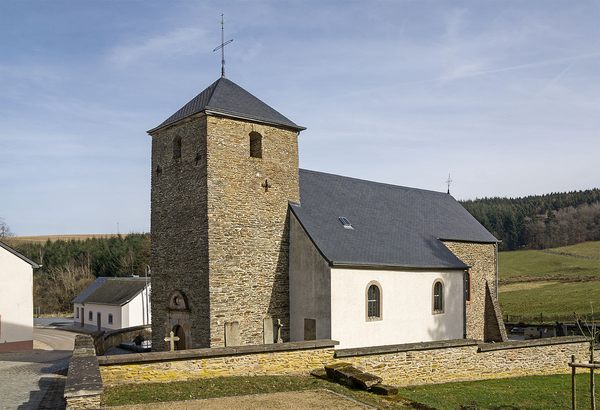The smallest village in the Grand Duchy, Rindschleiden is well known to Luxembourgers. This reputation is confirmed by the national register: The village’s last inhabitant (the priest) passed away in 2016. The village has only four buildings: the church, the presbytery, the old school, and a farmhouse that houses the Thillenvogtei Rural Museum.
The church of St Willibrord seems to be out of proportion for such a small village. The explanation is historical: In the park behind the church is a spring that St Willibrord is said to have gushed out with his crook. A pilgrimage to the spring used to be organised every Whit Sunday by the surrounding parishes. The church was gradually enlarged as a result. The church’s choir dates from the 15th century, the nave from the 16th.
In 1952, during a restoration campaign, mural paintings were discovered on the ceilings of the choir and nave. A total surface area of 170m² was uncovered. This is the largest collection of Gothic paintings preserved in the Grand Duchy. They probably date from the same period as the church: 15th century for the choir and 16th century for the nave.
From the entrance to the choir, the murals depict biblical scenes in the first bay, saints in the second, and especially the Evangelists in the choir. This remarkable ensemble has earned the church the nickname “the little Sistine Chapel of Luxembourg.” It makes the “smallest village of Luxembourg” one of the must-see places in the region.



